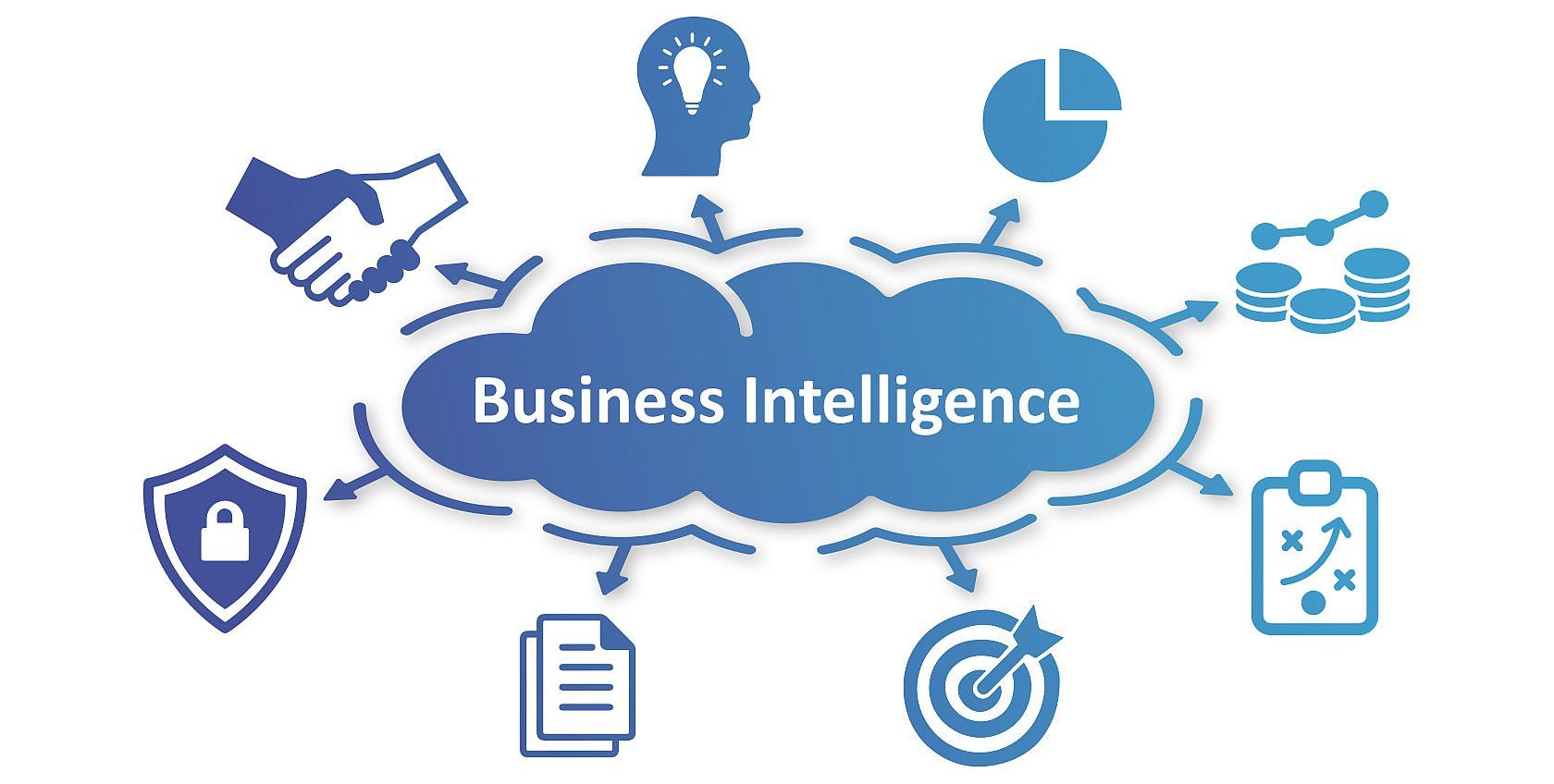Data is the most crucial resource in modern day business. It can help or break an enterprise. Power BI and Microsoft Fabric are powerful tools that businesses utilize to unlock the power of data. These platforms are at the core of business intelligence. They also, when paired with Azure Data Factory they become an effective tool for data analytics and decisions.
Power BI Your Business Intelligence Companion
Power BI, a service of Microsoft, is a powerful business intelligence tool that is designed to help businesses visualize and share the insights they gain from their data. Power BI lets users create interactive dashboards and reports, transforming raw data into actionable data.

No matter if you’re a tiny startup or a large enterprise, Power BI adapts to the needs of your business. Power BI combines seamlessly across different data sources, making it easy to integrate information from different platforms and databases. Even non-technical users are able to quickly produce meaningful reports and analyses with its intuitive drag-and drop interface.
Power BI supports real-time processing of data to ensure that you have up-to-date information. It offers a wide range of visualisations that permit users to present data in a comprehensible, appealing way. It is crucial to be able to share and collaborate on reports. This can help in improving decision-making in your company and help create a data-driven workplace.
Microsoft Fabric: Weaving Data Excellence
Microsoft Fabric is an orchestration framework that connects data across Microsoft services. Fabric weaves data into a cohesive entity that is able to be used by businesses.
Microsoft Fabric helps businesses maintain data integrity and consistency while they manage increasing data volumes. Microsoft Fabric can be integrated with a variety of services, from Azure Data Lake Storage, Azure SQL Data Warehouse to Power BI. The interconnectivity allows data to flow easily and allow insights to be derived from different sources.
The range of Microsoft Fabric is evident in its data transformation capabilities. Make use of it to cleanse and prepare data for analysis. It can also be used to it to ensure that data complies to your company’s guidelines for data governance. Microsoft Fabric makes sure that your data is reliable, reliable and ready to be analyzed.
Azure Data Factory: the Gateway to Data Transformation
Azure Data Factory is another essential component in the modern business intelligence landscape. It’s a cloud-based integration tool that allows you to set up, schedule, and manage data-driven workflows. Azure Data Factory allows for insightful insights by orchestrating the transformation of data and its movement.
Azure Data Factory’s flexibility in connecting to different data sources is one of its primary advantages. In the event that your data is stored on-premises or is in the cloud it can be integrated seamlessly, ensuring you have a holistic view of your data ecosystem. The platform supports batch processing, real-time data streams, and big data analytics, which makes it ideal for a broad range of use cases.
Azure Data Factory provides a visual interface to simplify the creation of data pipes. You don’t need to be an expert in programming to build, schedule or monitor workflows in data. This lets users stay in charge of data integration and self-service data preparation.
Power BI, Microsoft Fabric and Azure Data Factory: The Power Trio
If Power BI, Microsoft Fabric, and Azure Data Factory come together in a dynamo trio that can transform your data analytics activities. Here’s how they synergize:
1. Data Integration Azure Data Factory connects to a multitude of data sources, ensuring that all your data is readily accessible. This capability for data integration feeds Microsoft Fabric which orchestrates data across a variety of services. This will ensure that your data is properly arranged, cleaned and before it can be used to be used in Power BI analysis.
2. Microsoft Fabric’s Data Transform is essential for achieving your analytics needs. Fabric is an effective tool for data transformation cleaning, data cleansing and data processing.
3. Power BI is able to be a part of your data after it has been prepared and refined. Power BI enables you to make visually appealing reports and dashboards that make complicated data easily understandable. You can then share these data with your colleagues, fostering data-driven decision-making.
4. Scalability: Azure Data Factory is adaptable to handle growing volumes of data. Power BI combined with Microsoft Fabric can provide stable data as your company expands.
5. Real-time Insights: With real-time data processing capabilities, Power BI and Azure Data Factory give you the most current information that are vital to make quick and informed decisions.
The conclusion of the article is:
The field of business intelligence is changing rapidly and to remain competitive companies must harness the power of information effectively. Power BI, Microsoft Fabric and Azure Data Factory are a powerful trio that can assist you in taking your company intelligence to new levels. These three components can help you to achieve stunning visualizations as well as improve consistency of data and speed up processes. Embrace the potential of business intelligence and make the most of your data.